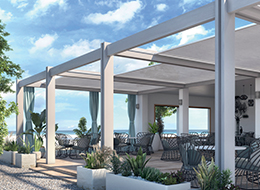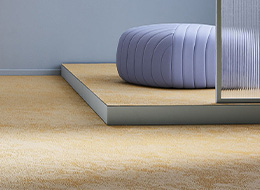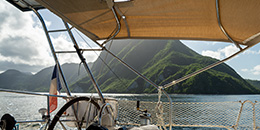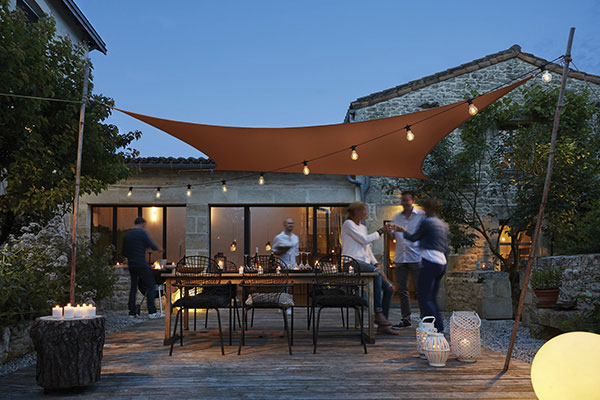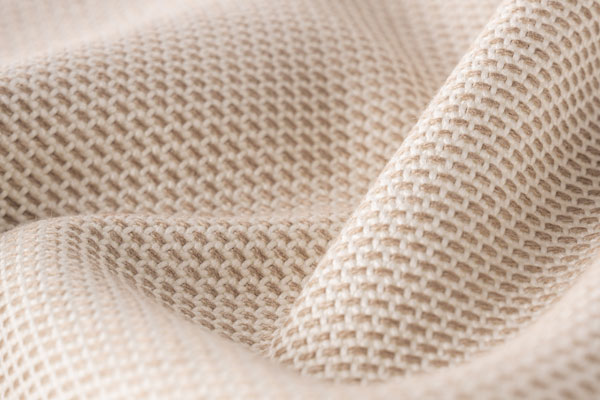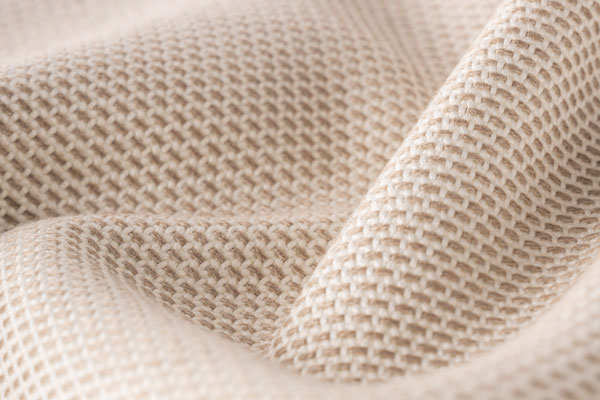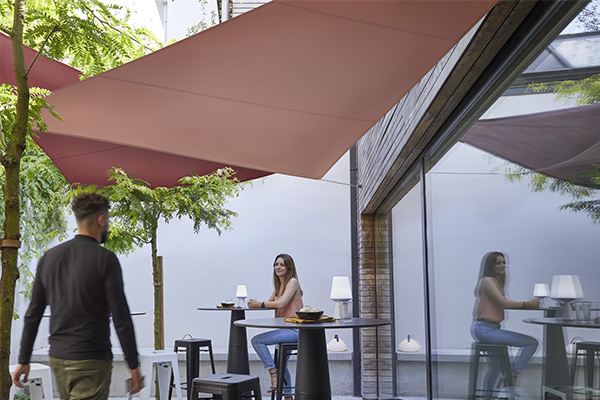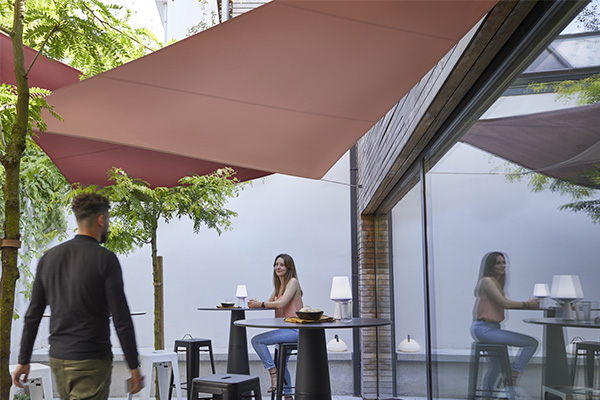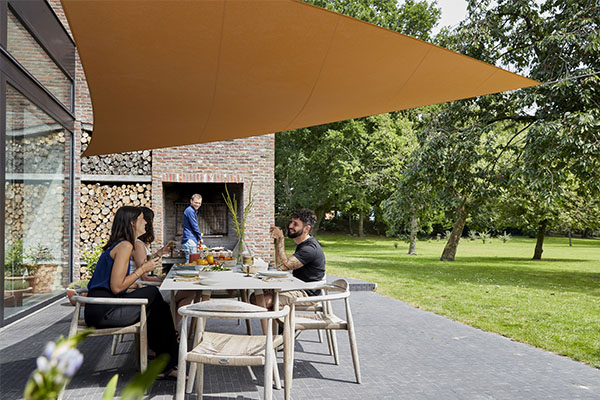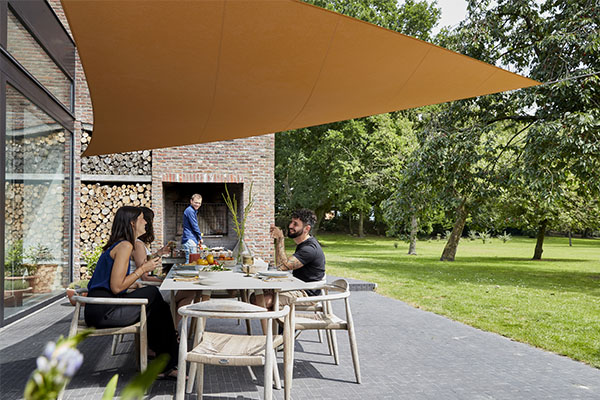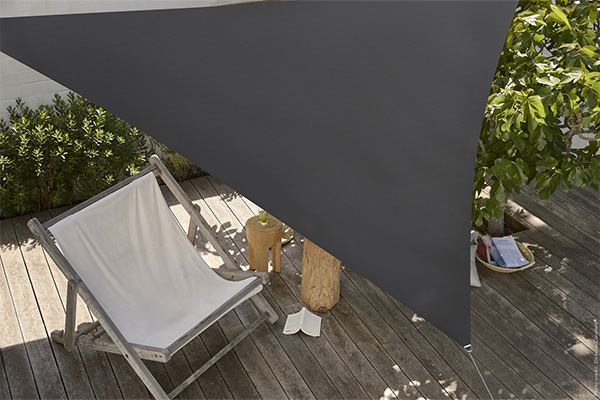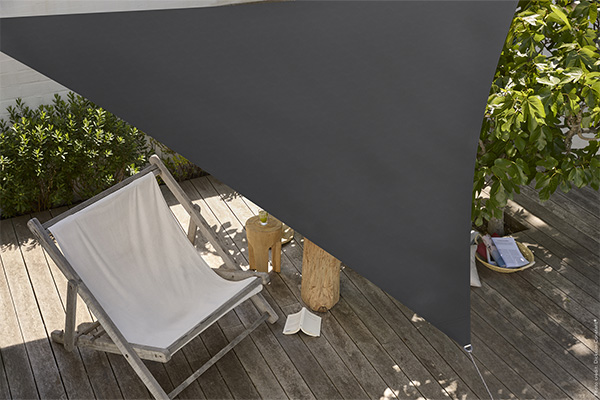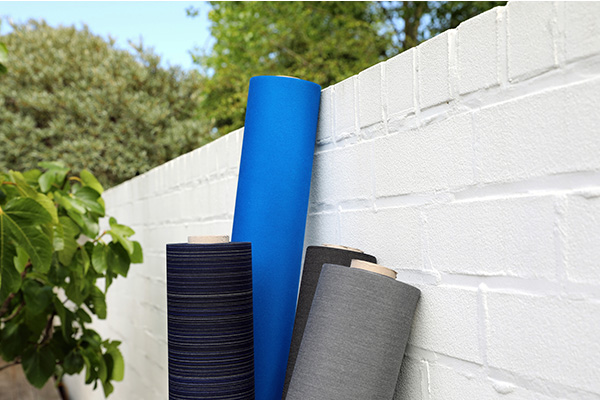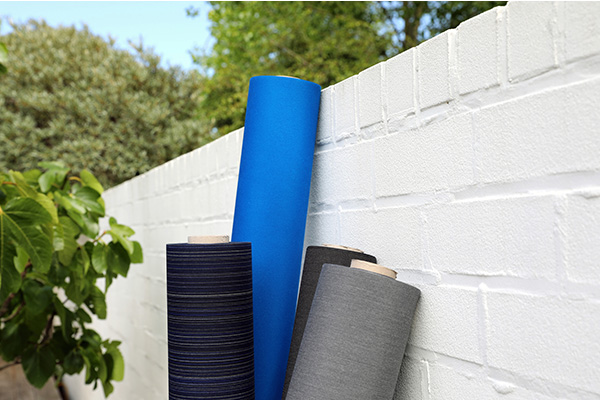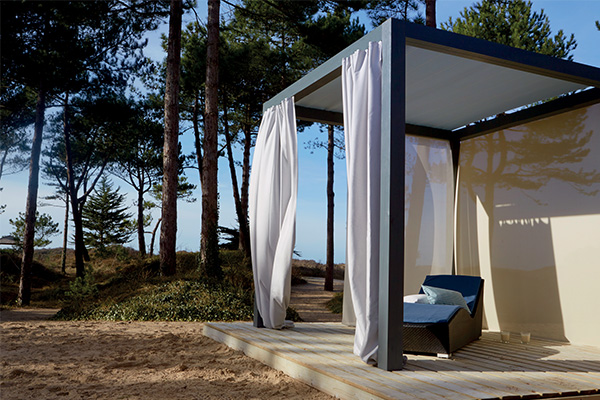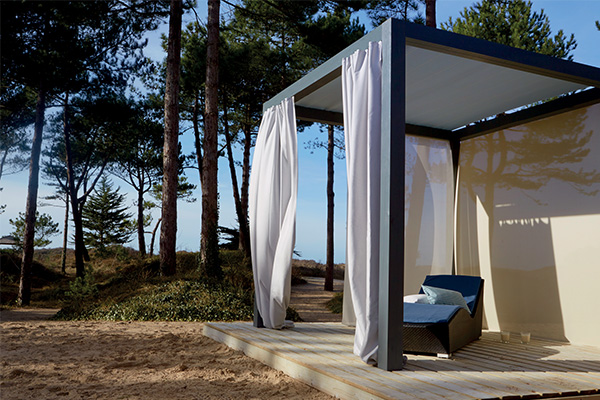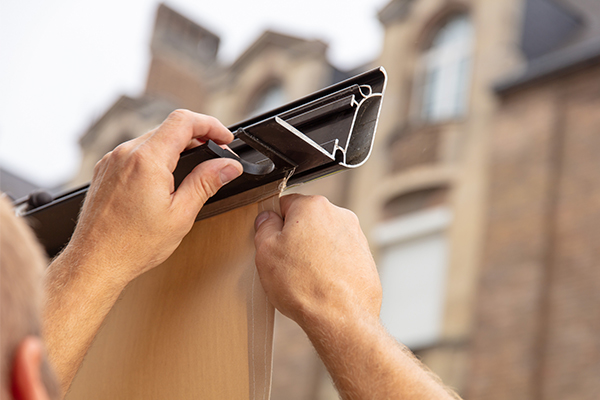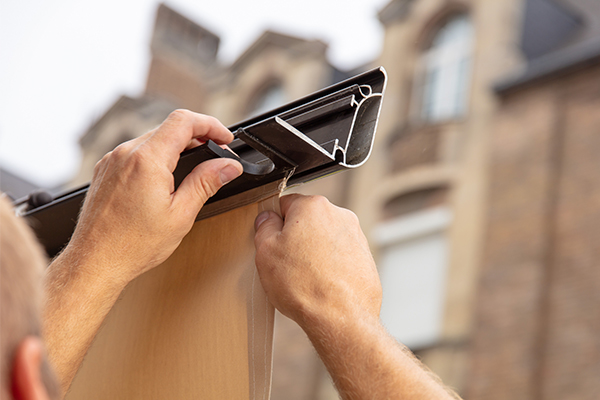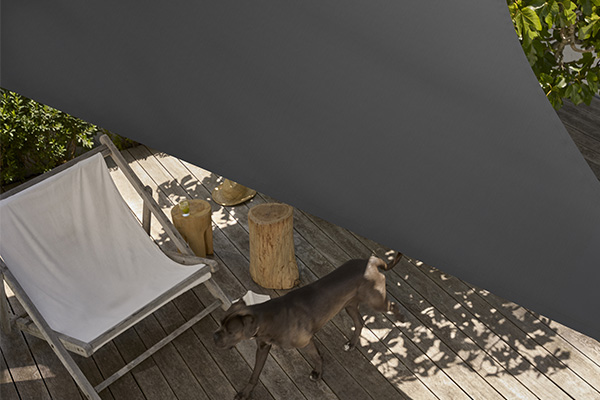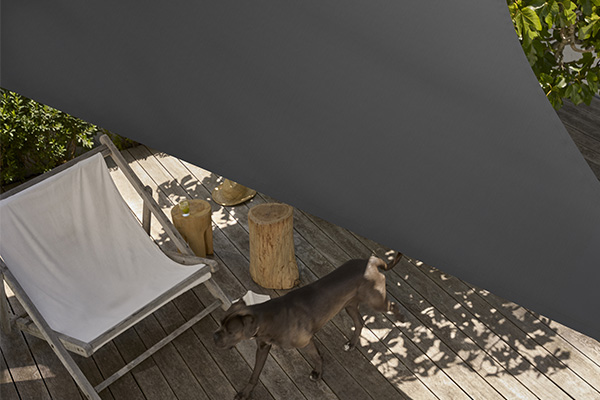Define the anchor points for your shade sail
What to do before choosing your shade sail: Find the anchor points on the façade of your home or the location for the poles and make sure that nothing will get in the way of the shade sail, such as eaves, a gutter or a tree. Don't hesitate to ask for advice from a professional, who will be able to determine whether your shade sail is suitable for the surroundings and tell you what kind of anchoring is needed.
Calculate the dimensions of your shade sail
Various standard dimensions are available (often between 2.5 m and 6 m approximately), but if you consult an approved professional, you will be able to create a made-to-measure shade sail that fits your space and your needs perfectly. The professional will be there to advise you and support you in your project. If the space where shade is needed is very large, you can overlap several shade sails, creating interesting effects with the dimensions and the shapes. This will make the installation more resistant to wind while using the same poles.
If you would like to define the area over which you want to install your shade sail yourself, take away at least 70 cm from the terrace's surface area. Alternatively, you can measure your desired size directly on your terrace where the shade sail will be installed, using string and starting from certain anchor points. Ideally, you should test out the dimensions by holding the string up high, in order to check the shadow it casts on the ground. This will correspond exactly to the shade provided by your shade sail (the ideal height for hanging a shade sail is 2.60 metres, on a slant of at least 15%).
Please note: Allow for at least 35–50 cm of cord (1 metre max.) between the anchor point and the shade sail. This margin will be used to keep the shade sail taut.
Repeat this process several times throughout the day: in the morning sun, at lunch time, later in the afternoon and in the evening, so that you can check the area in the shade at different times.
Choose the appropriate UV protection and waterproof rating for your shade sail
The most important criteria of them all when choosing your shade sail is the quality of the fabric. Your comfort and the longevity of your shade sail depend on it! On the market, you will find fabrics weighing between 140 and 340 g/m²: please note that, when the density is higher, the shade sail is stronger, longer lasting and less susceptible to tears and soiling.
The main purpose of your shade sail is to provide shade and protect you from the sun. You should therefore check its UVA and UVB protection and whether or not it is waterproof, especially if you live in a rainy region.
Several Dickson fabrics are especially suitable for shade sails:
- Orchestra: a range of 173 different fabrics in solid colour and patterned designs… Weight 290 g/m², Sunacryl solution-dyed 100% acrylic with Cleangard anti-dirt and waterproofing treatment. Blocks out between 90 and 100% of UV rays, depending on the colour (the darker the colour, the more UV protection it offers). 10-year warranty.
- Max: ultra-strong 320 g/m² fabric, solution-dyed 100% acrylic and excellent UV resistance. 10-year warranty.
- Infinity: These solution-dyed 100% acrylic fabrics, available in large widths (165-200-250-320 cm), are highly resistant to the extreme tension a shade sail can undergo, thanks to Dickson Resilient System technology. Special anti-dirt and waterproofing treatment. 290 g/m². 10-year warranty.
- SWK15: 360 g/m² micro-perforated high-tenacity polyester fabric. The perfect compromise that offers solar protection, natural ventilation and visual comfort.
Check the quality of your shade sail’s finishes and fixings
The edges of your shade sail must be strengthened with stainless steel rings in order to last longer and resist pulling. The fabric and its attachments will be subject to a lot of pressure in bad weather (wind, rain, storms, hail, etc.).












